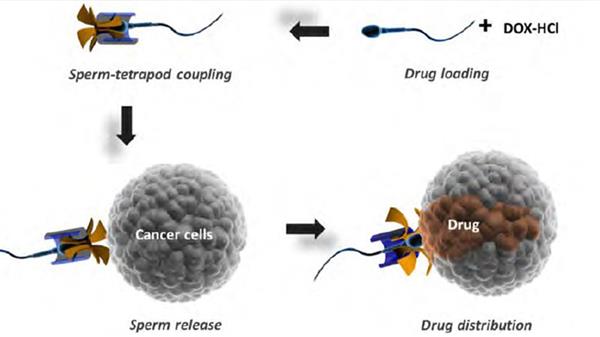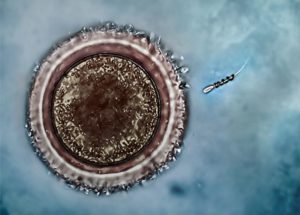The Institute for Integrative Nanosciences in Dresden (Germany) just developed an ingenious process for delivering anti-cancer drugs in the female reproductive system.
According to WHO, cervical cancer took away life of about 266,000 women worldwide in 2012. Gynaecological cancers as well as endometriosis and pelvic inflammatory diseases are especially difficult to treat with drugs.
And this is due to the environmental characteristics of the vagina, cervix, uterus and fallopian tubes.
The functioning
Researchers used sperm and a tiny device printed in 3D: bovine sperm cells precisely and a type of chemotherapy drug called doxorubicin.
“Specific targeting of the sperm to the cancerous area has been made possible by an advanced form of 3D printing technology.
A “3D printed tetrapod” is suitable for sperm. It is subsequently covered with a layer of iron and a layer of titanium which complete the micromotor.

The micromotor’s metallic coating serves to guide the sperm, using magnetic fields, directly into the affected area of the reproductive system.
By the time the target cells are reached, the impact with the device releases the dose.
First trials
Carried out in a Petri dish in a lab were successful.
Even though the results were positive, much more needs to be done in order to improve the technique, especially before its application in a female body.
This research finally shows technology enables new life-saving possibilities that previous generations could not have.





